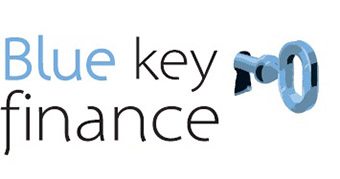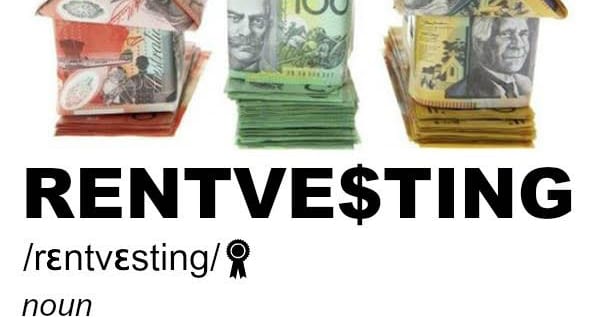What you need to know before you decide to rentvest
Can’t afford to buy in the area where you live? There is a way to enjoy the lifestyle of your favourite suburb and still get a foothold in the property market.
Rentvesting – owning an investment property while renting where you live – is gaining traction.
Research from Property Investment Professionals of Australia shows a third of first-time buyers are shunning the owner-occupied dream and instead investing in a property and continuing to be tenants elsewhere.
While it can offer the best of both worlds, rentvesting calls for plenty of research to be sure it stacks up as an alternative to buying a home.
Check the numbers
Taking your first step on the property ladder as an investor rather than owner-occupier will mean missing out on the first home owner grant and any savings on stamp duty.
These are entitlements that can really add up. In Victoria, for example, first home buyer benefits can total up to $51,070.
On the other side of the ledger, if your investment property is negatively geared (meaning it makes a loss that can be claimed on tax each year), rentvesting may mean you’re able to claim personal tax savings.
Over time, these savings can compensate for the sacrifice of first home buyer benefits.
But it’s worth crunching the numbers, or asking us to do it for you, to be sure that rentvesting makes sense financially.
You’ll need to consider your long-term plans too. The high transaction costs associated with buying and selling property mean a rental investment often works best as a long-term asset. The key for rentvestors is to be prepared to hold onto the property for at least five years.
Where to buy
Without personal preferences to consider, rentvesting opens up a much wider choice of areas to buy into.
If your finances don’t stretch to buying in an inner-city area, chances are the outer suburbs are also out of reach. The solution can be found in or near regional centres. Property values are a lot more affordable in regional cities, and plenty have thriving local economies and growing populations.
Good options for rentvestors in Victoria are Ballarat and Bendigo.
While regional markets tend to be more affordable than metro areas, they don’t have to be bridesmaid locations when it comes to capital growth.
The Real Estate Institute of Victoria says regional Victoria has recently outperformed the Melbourne metro market, with gains of almost 10% recorded in some regional towns in the March quarter of 2019 alone – four of the top 10 locations being in Ballarat.
Ultimately, nailing the location that’s right for you can come down to understanding your long-term goals.
If rentvesting is a stepping stone to future home ownership, it’s important to focus on areas with capital growth potential. Infrastructure developments can be a sign of possible future gains. On the other hand, if you plan to be a long-term renter, rentvesting should be more of a “yield play”.
Yield measures rental income as a percentage of a property’s value, and regional centres can have an edge here, too. CoreLogic figures show that rental yields in regional areas average 5.1% compared with 3.8% in our state capitals.
No matter where you buy, ideally a rental property should be a set-and-forget investment. To achieve this, we recommend a low-maintenance place plus a good property manager.
Rent potential matters
Rental income can be a crucial aspect of successful rentvesting.
Do your research to determine how much rental income you will receive from the investment property before proceeding with the purchase. Check a suburb’s vacancy rates, too. This will help you determine how desirable the area is. An area with a high vacancy rate may suggest it is difficult to find tenants.
No matter how strong the rent return is, it’s unlikely to cover all the outgoings of your investment property including insurance, maintenance, rates and loan repayments. In the meantime, you still have rent of your own to pay.
Measure the gap between your overall costs and the rental income you receive. This can show whether rentvesting will leave your cash flow thinly stretched – with or without tax savings, especially during the inevitable vacancy periods when you’re not receiving rental income at all.
Organising an investment loan
In recent years, investment loans have come with higher rates than owner-occupier mortgages.
Even with record low interest rates, rentvestors still need a reasonable deposit to get started in the market. Some lenders will accept a 5% deposit, but these are limited in number.
So, aim for at least 10%, preferably more.
A helping hand may have arrived with the recent decision by the regulator APRA to relax the lending restrictions it had imposed on banks and other financial institutions.
The result, is that, some investors may now have increased borrowing capacity. Speaking with us will provide a clear idea of how much you can afford to borrow for a rental property.
As an investor, note that lenders will include the rent you earn when calculating your ability to service a loan. This makes it worth asking the selling agent to put the property’s estimated weekly rent in writing so it can form part of your loan application.
On the flipside, lenders will also include the rent you pay in your household expenses.
When it comes to the potential tax savings of negative gearing, the picture is less certain.
Some – but not all – lenders will include negative gearing tax savings in their servicing assessment.
When you’re ready to buy your own place
A carefully chosen investment property should rise in value over time, and by selling further down the track any capital growth can form the basis of a home-buying deposit.
Unlike an owner-occupied home, any profit on the sale of an investment property will be hit with capital gains tax (CGT). By holding onto the place for more than 12 months, it’s possible to halve the CGT.
It may not be necessary to sell your investment property to buy a home. It can be possible to use the equity in your rental investment in lieu of a cash deposit. If you want to borrow against your equity so that you have a deposit available, you will need to draw down on your existing home loan or obtain a second mortgage loan.
In the meantime, being a rentvestor can be a big plus when it comes to finding a place to rent for yourself. When a property manager knows that you own an investment property, it can take you to the top of the queue. It shows that you understand how to take care of a property and the importance of paying rent on time.




Leave a Reply
Want to join the discussion?Feel free to contribute!